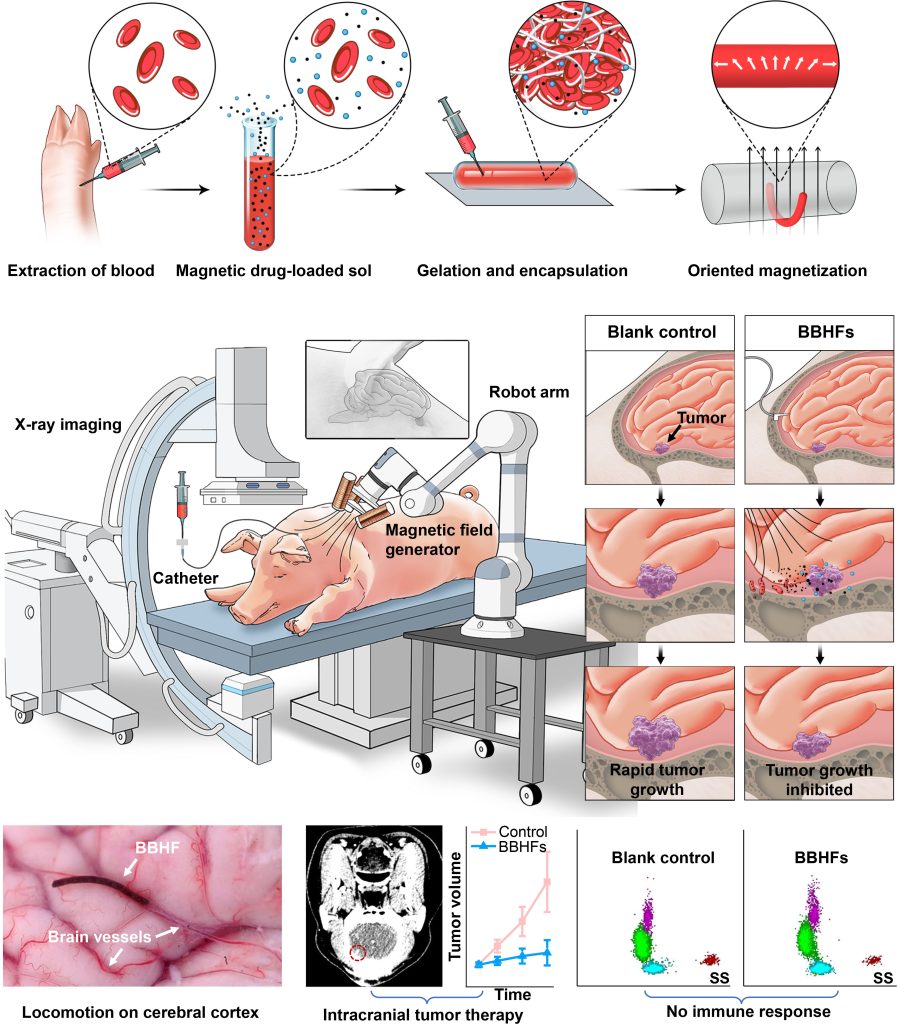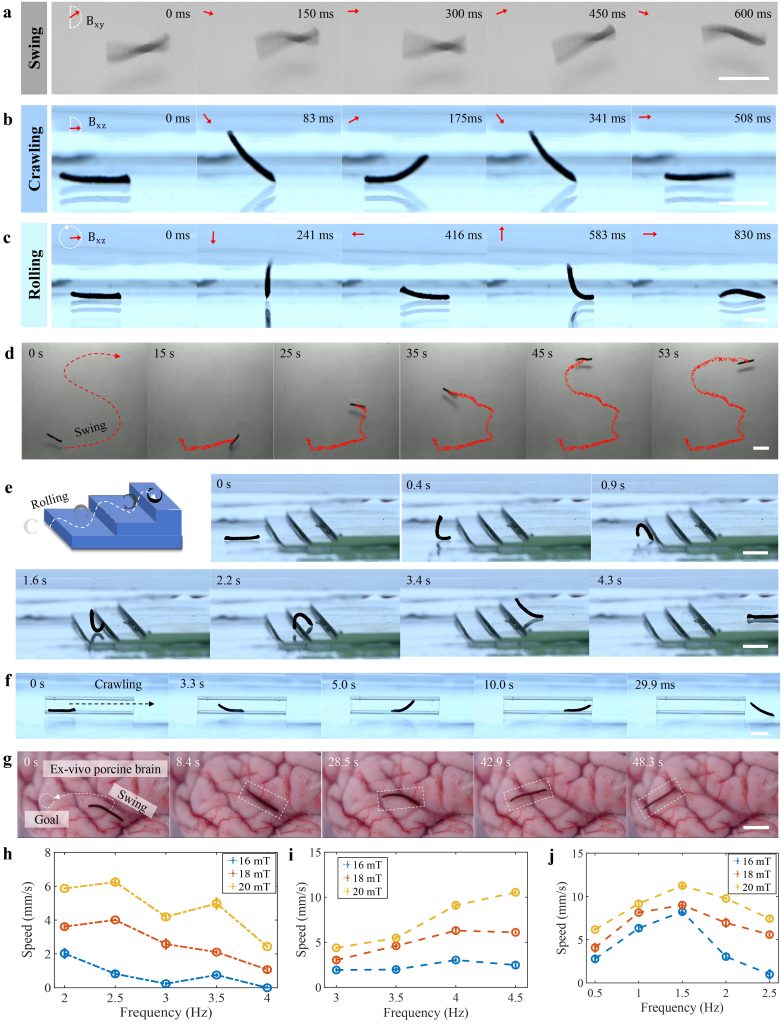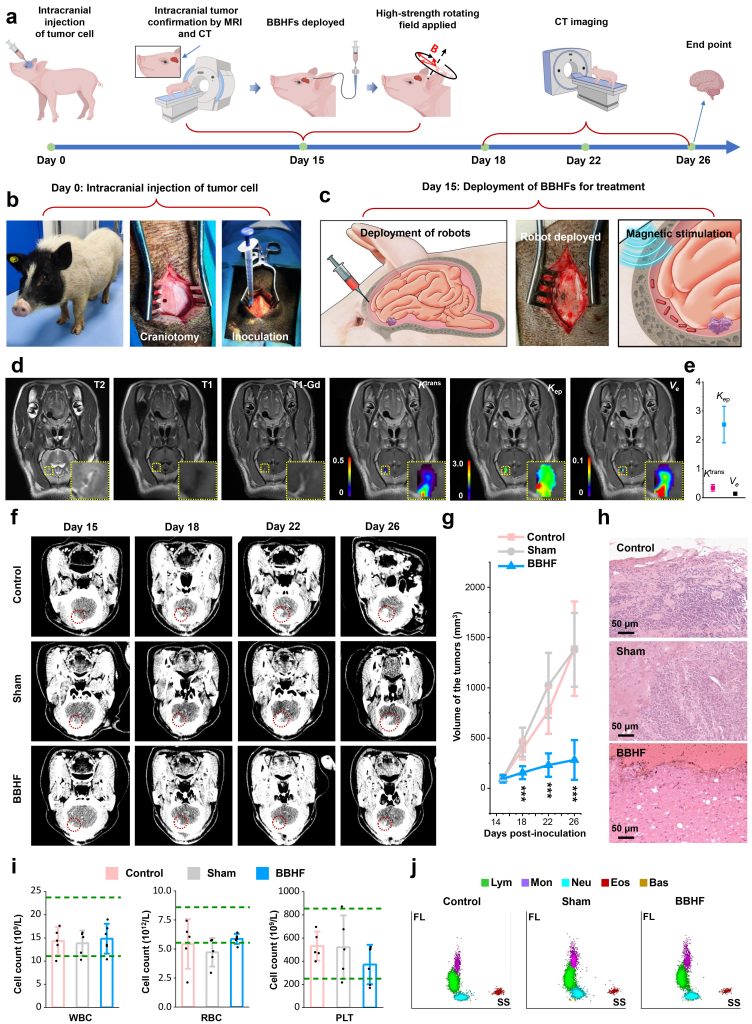A collaborative research team, led by Professor Zhang Li from The Chinese University of Hong Kong (CUHK)’s Department of Mechanical and Automation Engineering; Professor Wang Ben, an associate professor at Shenzhen University’s College of Chemistry and Environmental Engineering; and Dr Xu Tiantian from the Shenzhen Institutes of Advanced Technology (SIAT), Chinese Academy of Sciences, has successfully developed the world’s first magnetically driven blood hydrogel fibre robots in the SIAT-CUHK Joint Laboratory of Robotics and Intelligent Systems. This breakthrough marks a significant advancement in the treatment of deep-seated intracranial tumours. The research result has been published in the internationally renowned journal Nature Biomedical Engineering, with Professor Zhang Li, Associate Professor Wang Ben and Dr Xu Tiantian serving as the corresponding authors of the study.
New technology overcomes challenges in brain tumour therapy
Intracranial tumours located in deep brain regions or adjacent to functional areas have long posed significant challenges in clinical treatment. Conventional surgery often carries the risk of irreversible neurological damage due to the complexity of anatomical pathways. Radiotherapy may result in radiation necrosis of normal brain tissue, while chemotherapy is limited by the low permeability of the blood-brain barrier, making it difficult to achieve effective drug concentrations. Therefore, developing a non-invasive, precise and efficient treatment for such tumours remains an urgent and formidable challenge.
To address the issues associated with treating tumours in deep brain regions and near functional areas, the Hong Kong-Shenzhen interdisciplinary team has developed an innovative, magnetically driven, biohybrid blood hydrogel fibre robot based on the patient’s own blood. Using fibrin extracted from autologous blood and biomimetic gelation techniques, the team fabricated a flexible carrier with mechanical properties closely matched to brain tissue, significantly reducing the risk of immune rejection. Magnetic particles embedded within the robot enable a variety of biomimetic movements such as swinging, rolling and crawling, which allow it to navigate flexibly through complex brain regions like the subarachnoid space. Coupled with X-ray imaging technology, the entire therapeutic process can be monitored and precisely guided in real time.
The team has abandoned the conventional vascular delivery pathway and, in a breakthrough approach, selected cerebrospinal fluid as the robot’s natural channel for transportation. By integrating a specially designed multimodal magnetic actuation strategy, the robot can precisely navigate through brain structures and reach the tumour site. Upon arrival at the target, the robot is fragmented by a magnetically induced mechanical rupture mechanism under a high intensity oscillating magnetic field, enabling the efficient release of the chemotherapeutic agents it carries. This significantly increases local drug concentration, enhances therapeutic efficacy and reduces systemic side effects, providing a novel solution for the non-invasive, precise, efficient treatment of deep-seated, functionally critical intracranial tumours.
For the full research, please visit: https://www.nature.com/articles/s41551-025-01382-z.

Intracranial delivery of the magnetically driven blood hydrogel fibre robot under the combined system of a magnetic actuation unit and fluoroscopy.

Multimodal locomotion of the magnetically driven blood hydrogel fibre robots.

In vivo intracranial tumour therapy in pigs using the magnetically driven blood hydrogel fibre robots.

Professor Zhang Li
CUHK Press Release: Click here!